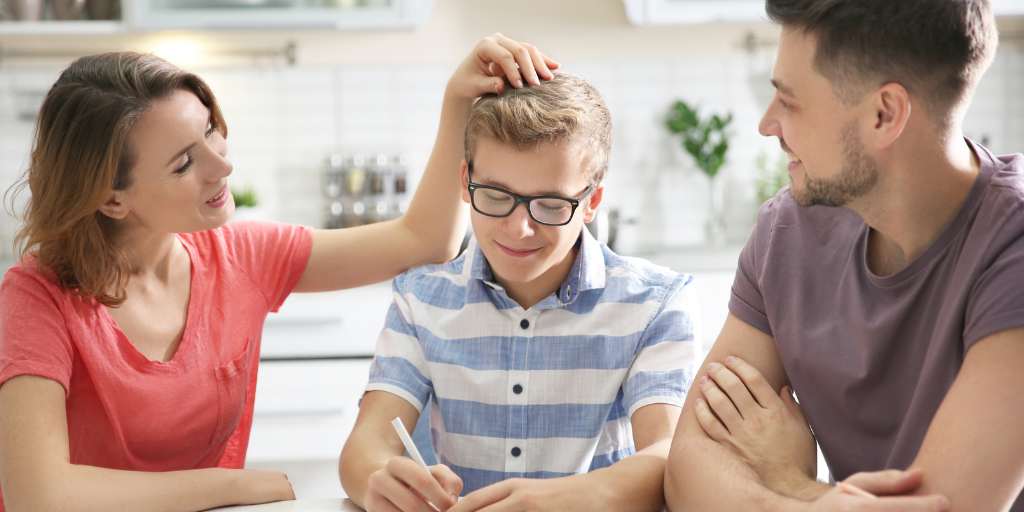
Looking for the best app to monitor a teenager’s iPhone? With 87% of teens using iPhones daily, it’s essential to find a parental control solution that’s effective on Apple devices. Here’s a detailed guide to the best parental control apps on iPhone in 2025 — plus everything parents should know about how to use these tools to keep their kids safe online.
Teens spend hours on their iPhones daily, so protecting them online requires the best tools to supervise their digital activities. For each of these apps, we’re laying out what makes them great and where they fall short so you can make an informed decision.
You can think of Life360 as location tracking-plus. In addition to viewing your teen’s location, you can use the app to see things like your child’s phone battery life, ETA, and driving speed. The app also offers extra features like identity protection and stolen phone protection at higher price points.
Limitations: Life360 works very well on the iPhone, but its features are limited. Without the ability to access any other apps or data outside of Life360, the parental control options are limited to its tracking features.
Life360 works well on the iPhone, but its parental control options are limited to its tracking features. It doesn’t offer tools for monitoring apps, texts, or online activity.
Bottom line: If you have a new driver on your hands and want to help them stay safe on the road, Life360 is a fantastic choice. But for robust parental controls for when they reach their destination, you’ll have to look elsewhere.
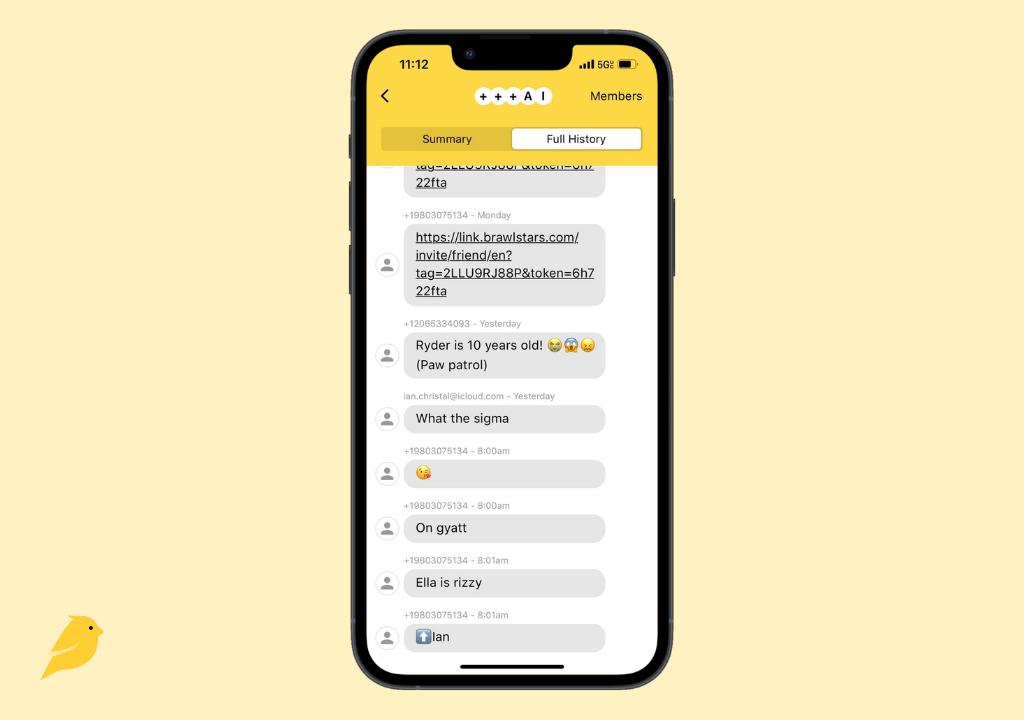
When it comes to the best parental control apps for iPhone, BrightCanary stands out from the pack. BrightCanary uses advanced AI technology to monitor your child’s text messages, YouTube, Google, Instagram, Snapchat, and every other app they use.
BrightCanary uses a safe and secure keyboard, installed on your child's device, to monitor what other apps can’t on iPhone. Some apps can only scan content when your child is connected to the same WiFi as you, which is challenging when they’re not home. BrightCanary is different: the app continuously monitors what your child types, searches, and sends whenever, wherever, and alerts you when you need to get involved.
Limitations: BrightCanary is not a traditional parental control app in the sense that you can use it to set screen time limits or content filters. Those features are freely available on Apple Screen Time. If you want an all-in-one app, this one doesn’t quite fit the bill.
Bottom line: BrightCanary is one of the most effective options to monitor a teenager's iPhone because it captures everything they type and send, no matter which app they use. The AI-generated insights are also helpful to learn more about your child's interests and well-being. Parents also love the Text Message Plus monitoring feature, which shows full text message conversations, deleted texts, and images and videos in text threads.
Qustodio wins points for offering very similar features and functionality for iPhones as it does for Android devices. Parents can use Qustodio to set limits on apps and block kids from using specific apps and websites.
Limitations: Qustodio’s monitoring capabilities only alert you when your child tries to access something you’ve already blocked. While the app is effective for restricting access, it lacks tools to monitor ongoing social media activity.
Bottom line: If you want to allow your child to be able to use the internet with guardrails, Qustodio may be an option. But if you’re looking for an app that also provides detailed insights into what your child does online, Qustodio may not be enough for you.
With Norton Family, you can block your child from accessing specific websites or content and get insight into their online activity. The reports show you what search terms your child uses and their browser history. It also alerts you if they attempt to visit a blocked site.
Limitations: Similar to Qustodio, the only option for managing social media is to block your child from the sites entirely. This is a good option for younger kids, but may not be the best choice for teens. One major drawback for Apple users is that Norton Family doesn’t provide any app supervision for iPhones.
Bottom line: Norton Family offers solid content filtering and online activity tracking, but isn’t great for families who need to monitor apps on iPhone.
Similar to BrightCanary, Bark uses advanced technology to scan texts, social media, and other online material for concerning content, alerting parents when there’s an issue. You can also do things like control app downloads and require approval for new contacts.
Limitations: While Bark can scan content on Android devices anytime, it can only manually scan iOS devices when they're connected to the same network as a desktop with the Bark for Parents app installed and active.
Bottom line: Bark might be suitable for monitoring a device used only at home, but it falls short in tracking your kids' iPhone usage wherever they go.
On average, children in the U.S. spend more than four hours a day on devices, with teens often clocking as many as nine hours. With such a significant portion of kid’s lives being lived online, it’s important that parents use every tool available to them to keep their kids safe from things like online predators, cyberbullying, and inappropriate content.
Recently, the American Psychological Association recommended that parents monitor social media for kids under age 15. That’s because excessive social media use is associated with an increased risk of depression and anxiety, as well as negative impacts on sleep quality and self-esteem. Parents can and should use parental controls to manage the amount of time kids spend on their devices and understand what type of content they consume.
Choosing the right parental control app depends on your needs. Start by deciding what features are important to you: if you’re just looking for powerful location tracking, but are less worried about content monitoring, an app like Life360 might be perfect for you.
For parents who want comprehensive iPhone parental monitoring — including social media, texts, and searches — BrightCanary provides unmatched functionality.
Above all, the best parental control app is the one that works best for your family.
Some apps rely on a block-and-restrict approach, but Apple devices already come with robust parental control features that allow you to restrict what websites, apps, and content your child can access. Other parental control apps, allow parents to monitor what their kids do online and step in when they need to. This level of iPhone parental monitoring can help teach your kids how to be safe and responsible digital citizens, and it encourages more regular conversations about what they see online.
Ready to ensure your teenager’s iPhone safety? Download BrightCanary today for the best in iPhone parental controls.
BrightCanary offers the most robust iPhone parental monitoring features, including text message and social media monitoring.
Apple’s Screen Time is free and offers basic restrictions, but it lacks advanced monitoring capabilities like the ability to see what your child is sending and receiving.
Yes, apps like BrightCanary allow parents to monitor texts, including deleted messages.
Most apps block social media entirely, but BrightCanary monitors all social media and messaging platforms, including Instagram, Snapchat, Roblox, and Discord.

Who among us hasn’t scrolled through social media and felt that particular combination of jealousy, anxiety, and unease from seeing the fabulous things others are doing in their fabulous lives with their fabulous friends? Now, imagine experiencing that as a teen. (I shudder at the thought!)
The fear of missing out (FOMO) can lead to negative mental health consequences in adolescents, such as anxiety and even a decline in academic performance. It’s important for parents to take steps to combat the impact, especially when their kids begin connecting with friends online. Here’s how to deal with FOMO and strategies to help lessen its impact.
FOMO stands for Fear of Missing Out. The term refers to the fear of not being included in something fun, interesting, or enjoyable that others are doing, particularly peers.
The acronym has been around for more than 20 years and has even earned a place in the dictionary. But its impact on teens is more relevant than ever because teens today have more access, more visibility, and more difficulty getting away from what their friends are doing online.
FOMO can make kids anxious about being excluded. It can also lead them to perceive their lives as less exciting than those of their peers, which can further exacerbate their anxiety.
Research has shown that FOMO can lead to compulsive social media use. That is a significant trigger for social media fatigue, resulting in elevated anxiety and depression.
FOMO is also associated with problems sleeping, depression, attention span, and negative impacts on physical well-being. In short: FOMO isn’t just something your child is dealing with among their friend group. It can have real and lingering effects on their mental, emotional, and physical health.
While the term FOMO may be a 21st-century invention, the phenomenon is certainly not new. It is, however, made much thornier by the existence of social media.
The constant exposure to a carefully-curated window into the lives of their peers and the resulting comparison to their own messily real life is enough to make any teen feel FOMO. But it’s not as simple as just logging off to feel better.
Because so much of the social lives of teens has shifted online, kids can also feel like they’re missing out if they’re not constantly checking their social feeds or group chats. It’s a double-edged sword that’s tricky for teens to escape.
Here are some potential red flags that could indicate your child is struggling with FOMO:
If you suspect your child is dealing with FOMO, here are some ways you can support them:
Focus on your relationship with them. Research suggests that relationships between parents and their teens that are based on trust and open communication are powerful protective factors against FOMO.
Limit social media use. Delaying access to social media, setting limits on device use, and helping kids develop a balanced relationship with social media can help minimize FOMO’s negative health effects.
Encourage real-life activities and relationships: Simply removing or cutting social media access for your child isn’t likely to help. It may lead to tech envy and the fear of missing things online. Instead, replace the connections that social media brings them with offline alternatives. Offer to drive your teen to see their friends or host a hangout at your house. Encourage your child to explore screen-free interests and hobbies, particularly ones that get them out of the house and around other people.
Help them see through the facade. Explain that people tend to show their best moments online, often omitting a big part of the picture. For example, teens may post pics of getting ready to go out with the girls, but fail to mention the party was totally lousy when they got there. Remembering that they never have the full context when looking at other’s social media can help kids overcome the feeling that they’re missing out.
Create space for digital detoxes. By establishing household expectations around device use, you provide a structure for daily digital detoxes. Play around with what works for your family, such as phones off an hour before bed or no devices at the dinner table.
Practice digital check-ins. Set aside designated time to spend with your child looking at their social media feeds together. Ask them how their feeds make them feel and check in with them about any big feelings they’re struggling with, like feeling left out or unsure how to spend their time.
Monitor their social media use. BrightCanary uses advanced technology to monitor your child’s social media and texts and alerts you to any issues. This can help you spot signs of FOMO (like comparing themselves to others or feeling sad they aren’t going to a party) so you can start a conversation with your teen. It’s a great compliment to your other efforts to support your child in the digital world.
FOMO can have a negative impact on the mental health and wellbeing of kids. Luckily, there are steps parents can take to mitigate the effects of FOMO and guide their child toward healthier habits around social media and devices. BrightCanary helps parents keep their kids safe and on track across every app they use. You'll get real-time updates for any concerning content, so you'll know when it's time to step in and provide support. Start your free trial today.
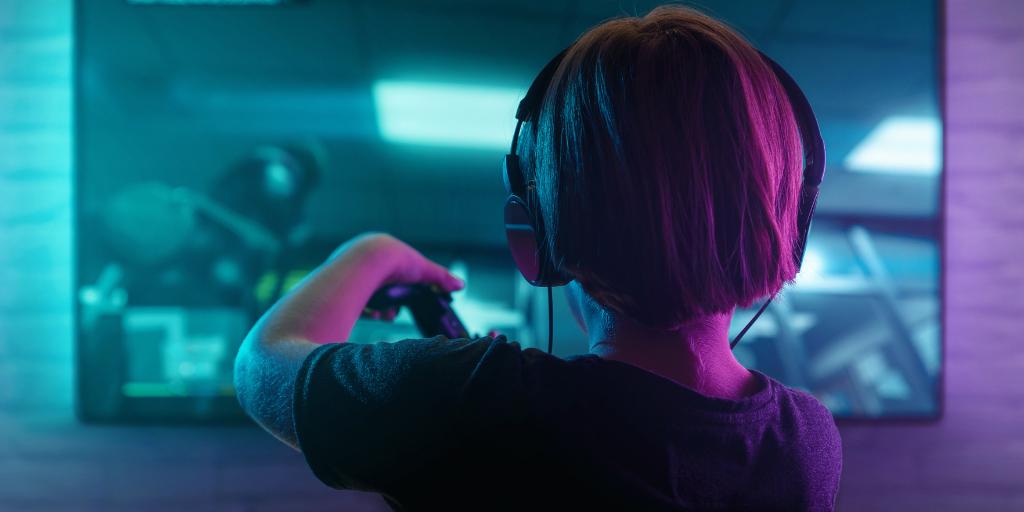
Contrary to outdated (and unfounded) assumptions that video games rot children’s brains, research shows gaming has a host of potential cognitive benefits for kids. But not all games are suitable for children, so parents need to be discerning about what makes its way to their kid’s screen. Here’s a list of five kid-friendly video games that your children will enjoy and parents can feel good about letting them play.
Pode is a character-based puzzle game that starts out simple and grows in complexity as a player progresses.
Pode is visually stunning and manages to be both fun and relaxing at the same time. It's designed as a cooperative adventure, but it is also enjoyable to play solo as well. Characters are filled with personality, and the game focuses on friendship and teamwork.
There are no content or safety concerns that parents need to be aware of with Pode.
For the first time in this popular game’s long and storied history, Princess Zelda comes out of the shadows and replaces Link as the protagonist.
Echoes of Wisdom encourages creative problem-solving, resourcefulness, and out-of-the-box thinking. It’s empowering to see the princess take the reins for once and themes of gender equality, responsibility, and compassion are threaded throughout. Because Zelda primarily uses her wand instead of the more traditional weapons Link carries, this game features less combat than its predecessors.
There’s a small amount of violence, but it’s quite tame. The fanciful enemies, cartoonish violence, and lack of blood and gore keep things light. When enemies are defeated, they just disappear.
Super Mario Bros. Wonder is a traditional side-scrolling Super Mario game with fun updates and modern graphics.
It’s been over a decade since the last side-scrolling addition to the Mario Bros franchise and friends, it was worth the wait. The graphics in this game are nothing short of amazing. Players can choose from a full arsenal of Nintendo characters to embody and even spend time as a delightfully rotund, water-shooting elephant (so fun!).
Super Mario Bros. Wonder is nostalgic without being dated, and it’s likely to be a hit with the whole family. The multiplayer option (either locally or online) promotes teamwork, and the story is centered around working together for the common good.
Like you’d expect from Mario games, there are enemies to defeat, but they’re cartoonish and non-human. The implication is that enemies are just knocked out or knocked off-screen, rather than being killed. Online play is possible, so make sure you’ve set up Nintendo parental controls, especially for younger kids.
This game is a baseball simulation that lets gamers play as their favorite MLB players and teams. It’s the latest installment in a popular series, with improvements over the older versions, including updates to reflect recent league rule changes.
What could be more wholesome than baseball? Amateur players and professional fans alike will enjoy suiting up and going head-to-head with rival teams. Players can even use historical mode and play in the Negro Leagues or (new with this edition) in an all-female league. Cross-platform play is also possible, so your kid can join their friends regardless of their gaming setup.
There are no content considerations for parents to be aware of, but in-app purchases are possible.
This point-and-click adventure is based on the classic Nancy Drew mystery novels. Players take on the role of junior detective Nancy Drew to solve mysteries using her ultimate superpower: her brain.
Nancy Drew: Mystery of the Seven Keys is a fun way for your kids to learn about historical events and figures, as well as other cultures, languages, and customs. They will practice critical thinking and problem-solving as they work to catch the culprit.
There violence in the game, but it’s mild.
Parents should be aware of what video games their kids are playing to make sure the content is age-appropriate, but there are plenty of wholesome and fun options for kids to enjoy.
Heads up: BrightCanary can help you supervise your child’s online activity. While it doesn’t cover gaming platforms, the app’s advanced technology scans your child’s social media, Google, YouTube, and text messages so you can keep an eye on what media they’re consuming online — like video game playthroughs on YouTube and conversations with the friends they game with. Download the app today to start your free trial.
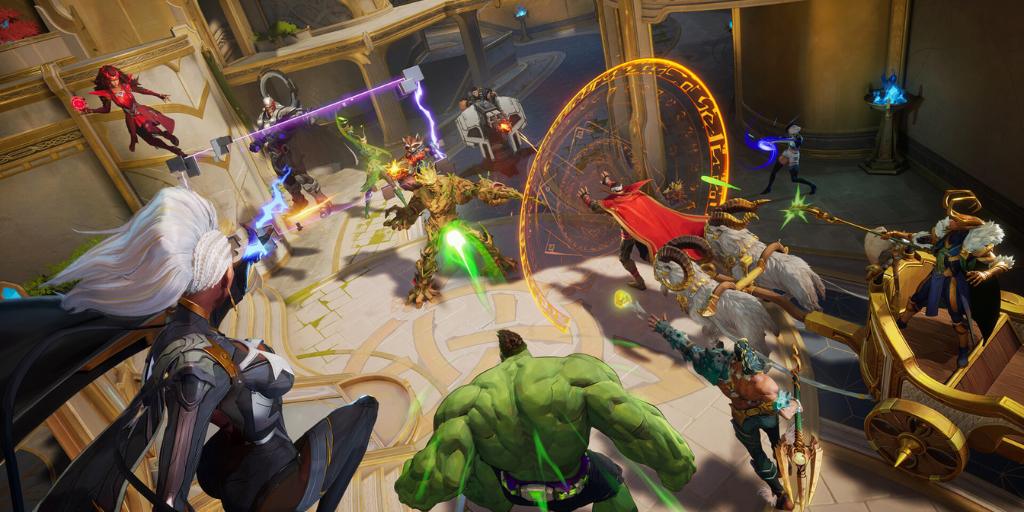
A video game where you can play as your favorite Marvel character is a dream come true for fans of the Marvel universe. Since it was released in early December, Marvel Rivals has taken the gaming world by storm. Your child might want to play the game because it features their favorite superhero, but is Marvel Rivals appropriate for kids? Here’s what we found.
Marvel Rivals is a 3rd-person shooter video game where players can choose from a lineup of 33 characters from the Marvel universe. Players join teams of six and face up against another team to see who can be the first to accomplish an assigned task. The game is available for PlayStation, Xbox, and PC gaming systems.
The Entertainment Software Rating Board (ESRB) gives Marvel Rivals a rating of T for Teen.
For many games, the ESRB puts a rating summary and content descriptor on their website to give insight into their decision. Because every family has different values and concerns that they take into consideration when making content decisions for their child, this additional information is helpful.
However, as of the writing of this article, the ESRB has yet to post anything for Marvel Rivals. The game is so new that Common Sense Media, a solid go-to for parents looking for in-depth media information for their child, hasn’t reviewed the game yet, either.
The closest comparison to Marvel Rivals is Overwatch, which is similar in game mechanics and content. Common Sense Media rates Overwatch as ideal for players 14+.
Keeping with the historically tame language from Marvel (although they’ve pushed boundaries more in recent years), there isn’t any questionable language to speak of in Rivals. The closest is Rocket Raccoon’s use of “flerken” in place of the F-word.
There’s no sex in Marvel Rivals. While some female characters wear costumes that reveal their cleavage or backsides, it’s nothing to raise an eyebrow over (unless you’re ultra-conservative in that regard).
The biggest concern parents need to be aware is that Marvel Rivals is a team game, played online, often against strangers. Like many things that require working together, people can get quite heated at each other, and the chat can become downright toxic.
This is compounded by the fact that voice chat is the default in the game, so your child could easily end up with a full-grown adult berating them through their screen. (There’s also a text chat option.)
Luckily, you can turn off both voice and text chat. In this case, a player is still able to use preset “pings” to alert their teammates when they need help. For an added layer of protection, your child can avoid playing with strangers altogether and use practice mode against AI players.
As one might expect from a game based on superheroes, there’s quite a bit of violence in Marvel Rivals. However, the violence is cartoonish and void of blood and gore. A few characters have intense, realistic-looking guns, which may give parents pause. However, there are also plenty of characters your child can choose from who use things like slingshots, fists, or non-weapon abilities to fight.
Although killing is a big part of the game, it’s also not the main point. The team's primary goal is to accomplish an objective, such as pushing a vehicle across a map or defending a specific zone. Also, when characters are “killed,” they just run out of health, fall over, and then respawn indefinitely.
When deciding if Marvel Rivals is appropriate for your child, the easy answer would be to follow the ESRB rating and wait until they’re 13. However, a closer examination reveals a more nuanced choice.
With measures such as turning off chat, requiring your child to stay in practice mode against AI, and monitoring their play, the game can be a fine choice for a mature tween or older elementary-age kid. It’s helpful to draw a comparison to PG-13 movies. PG-13 doesn’t mean a movie is never appropriate for any child under thirteen. Instead, it suggests parental guidance is advised if younger children do watch it. The same can be said for Marvel Rivals.
While it’s not a great choice to let your child loose on the game by themselves with no restrictions, parental involvement mitigates many of the concerns.
Marvel Rivals is a 3rd-person shooter game played with teams made up of Marvel characters. While there are some elements that raise concerns for kids, parents can take steps to make play safer for their child.
BrightCanary can help you supervise your child’s online activity. While it doesn’t cover gaming platforms like Xbox or PlayStation, the app’s advanced technology scans your child’s social media, Google, YouTube, and messages so you can keep an eye on what media they’re consuming online — like video game playthroughs on YouTube and what they send to the friends they game with. Download today to start monitoring for free.

You’d practically have to be living under a rock to not know that artificial intelligence (AI) has exploded over the past few years. From answering questions to planning vacations, technologies like ChatGPT and Claude are firmly a part of everyday life. But did you know that there is some great AI for parents that can help you improve your communication with your child?
At BrightCanary, we believe that AI can be harnessed to help parents maneuver difficult situations with their children. In fact, we’ve built our app around this premise. Here are several ways BrightCanary’s AI tools can help you in your parenting journey:
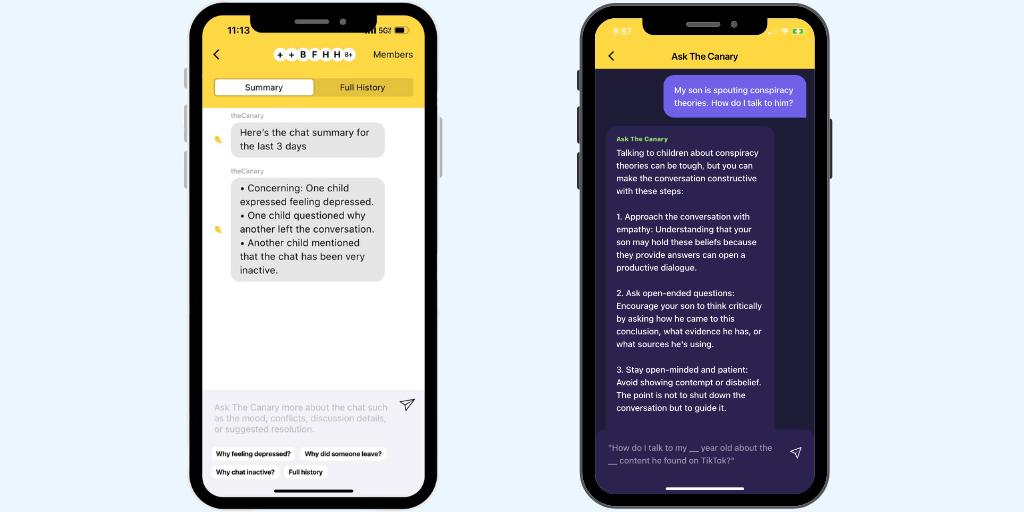
Ask the Canary is a chatbot powered by large language model (LLM) algorithms, which scrapes the internet to generate relevant answers to your questions. Instead of Googling your question and then wading through page after page of info to find something useful, Ask the Canary is designed to answer your question for you. So instead of spending hours looking for help, you’ll get useful, targeted advice and practical solutions in a matter of seconds.
Let’s face it: knowing how to broach difficult subjects with our kids is hard. We’re worried we won’t be helpful or that we might say the wrong thing and actually make the situation worse. That’s where AI can be really helpful — it functions as a sounding board, helping you to brainstorm different conversation-starters and directions.
To test it out, I posed some questions to Ask the Canary to see what it suggested. Here’s what I found:
My prompt: “I got an alert on BrightCanary that people are sending hurtful texts to my child. What are some conversation starters I can use to talk to them about it?
Ask the Canary’s response: “I noticed some of your friends have said hurtful things in your text messages. How does that make you feel?”
My prompt: “My child is posting inappropriate things online. What are some conversation starters I can use to talk to them about it?”
Ask the Canary’s response: “I noticed something that worried me in your posts. What was your intention when you posted this? How do you think these posts align with the values we cherish as a family?”
My prompt: “I want to know more about a show my child is watching. What are some conversation starters I can use to ask them about it?”
Ask the Canary’s response: “Can you tell me about the show you’re watching? How does this show compare to other shows you like?”
No matter how I posed my questions, Ask the Canary came back with useful advice. But I did notice that certain things helped me get even more out of the experience. Here are some tips:
When facing difficult parenting situations, it’s hard to know what to say to your child. Luckily, there are some fantastic tools using AI for parents that can help. Ask the Canary provides targeted advice on your toughest parenting questions right from your phone, including ideas to help you have better conversations with your child. All you need is the BrightCanary app to get started.

Ah, oversharing about your personal life online. We’ve all seen it, and most of us have done it a time or two as well. But when it comes to our kids, oversharing on social media can be particularly risky. Here’s everything you need to know about the dangers of oversharing online and how to help your child avoid it.
Oversharing is saying something personal or inappropriate, either in the wrong setting or to the wrong person.
For example, it might be perfectly fine for your teen to discuss a sensitive family situation one-on-one with their best friend. But you may not want them telling their entire homeroom. And you almost certainly don’t want them blabbing about it on their Instagram.
Kids may not be aware that they’re oversharing — they may simply want to talk about their experiences with their friends, without realizing that the information is public or can be easily screenshotted and shared.
In other instances, kids may overshare because they’re actually being scammed or swindled. A scammer might convince their victim to share personal details, like their passwords or bank information.
The act of oversharing is as old as time, but the digital era has introduced new risks to the behavior. Here are some of the dangers oversharing poses to kids:
The uncomfortable truth is that it’s shockingly easy for kids to overshare online. Here are some ways your child might fall into the TMI trap:
Captions. Photos and videos. Stories. Social media is where your mind probably goes first when you think of oversharing online. And rightfully so — it’s incredibly easy to overshare on social media posts.
One way this can happen is through sadfishing, or oversharing about their personal life with the goal of eliciting sympathy. Sadfishing can have unintended consequences, like making a situation seem more dire than it actually is or feeding into a child’s attention-seeking behavior. Not to mention, they may regret the post once their emotions calm down.
Your child’s social media bio can also divulge personal information, even if their account is private. Including things like their age, where they live, their school, and even hobbies can put them at risk.
If your child’s accounts are set to public, anyone can view what they post — from YouTube to Pinterest. This means content meant for a small group of followers could end up being seen by the wrong audience.
For example, if your teen uses Reddit, their comment history is publicly visible. While they may use the platform to connect with friends or share interests, a stranger could piece together personal details if your teen frequently posts about their location, friends, family, or health information.
It’s easy to assume that text messages and direct messages are only visible between the people on the thread. But anyone in the group can take a screenshot and forward it to others or post it on social media.
It’s common for people to post about what they’re doing while they’re doing it. This is especially problematic on places like Instagram Stories and Snapchat, because other users are likely to see it in real time. If the post includes their location, it can put them at risk because it reveals their whereabouts or a place they frequent.
From your child’s profile picture to the images they share on public accounts, the things in their background can reveal a lot about their personal life.
A photo or video while on campus can provide clues about where they go to school. Posters on their bedroom wall or knickknacks on their shelf can point to their interests. A picture in the front yard with the house number visible behind them can help someone figure out where they live.
With all the risks and the potential for kids to accidentally overshare, it might feel tempting to shut down online access altogether. We understand. Instead, focus on teaching your child to avoid sharing certain types of sensitive details online:
The best way parents can address oversharing is by being proactive and having conversations with their kids before it becomes an issue. Here are some tips for discussing oversharing with your child:
Oversharing online poses significant risks to kids. It’s important to educate your child about the dangers of oversharing and teach them to not disclose personal information online. You should also help them understand the surprising ways they may be oversharing without even realizing it. BrightCanary can help you keep an eye on your child’s online activity by monitoring their social media and text messages so you can watch out for oversharing, signs of cyberbullying, and more. Download the BrightCanary app and start your free trial today.
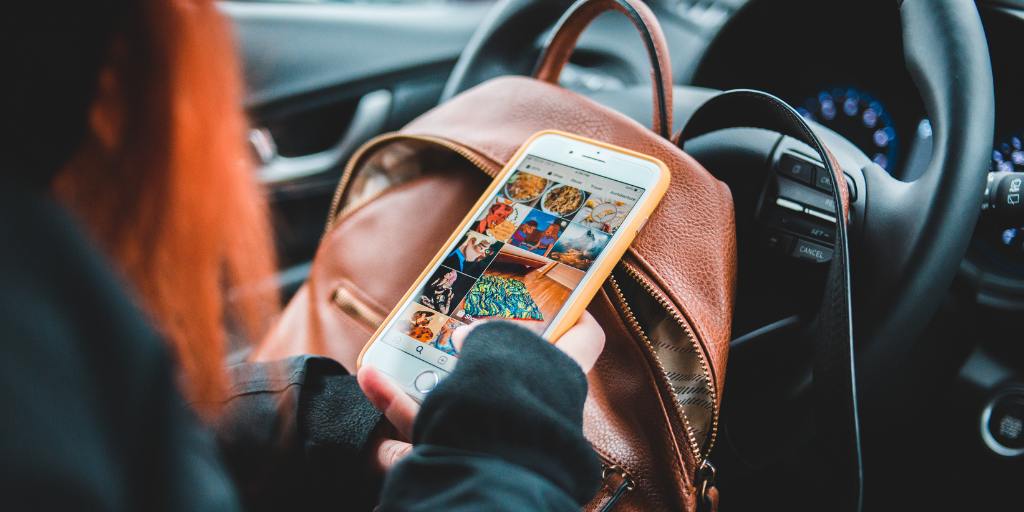
Instagram direct messages (DMs) can be a fun and positive tool. Your child can use them to talk to friends, share silly memes, and connect with family. But they’re also a place where your child might encounter strangers. This guide explains everything you need to know about Instagram DMs and how to keep your child safe while using them.
Instagram DMs are an in-app private messaging feature that allows people to exchange texts, photos, and posts with other Instagram users. DMs can be between two people or a group, and they are only visible to the sender and the recipient(s) of the message.
Instagram also has a vanishing mode feature, similar to Snapchat. This mode lets users exchange messages, photos, videos, and other content through chat that disappears when one of the parties either leaves the chat or turns off vanish mode.
Your child’s account settings will determine who can message your child. Let’s break it down.
If your child’s account is public with no restrictions on messages (not recommended), anyone can DM them, and all messages will be delivered to your child’s inbox.
If your child has a private account without any message restrictions, messages from non-followers will be filtered into their “Message Requests.”
Certain DMs will be automatically filtered to the message requests folder, depending on your child’s account settings. Usually, these requests come from people who don’t follow your child. They won’t get a notification about these messages, but they can access them.
The good news is that accounts can be set so messages from strangers don’t reach the Message Requests folder.
Here are some ways you can limit who’s able to DM them through the app.
With the rollout of Instagram’s Teen Accounts, kids under 16 are automatically placed in the strictest messaging settings. These settings limit contact to people they already follow or are connected to, and changes can only be made with parental permission. However, because Instagram’s age verification is fairly easy to bypass, parents should confirm their child’s account is set with the correct age.
While Teen Accounts don’t apply for kids ages 16-17, parents can still use Instagram supervision. You won’t be allowed to change any of your child’s settings, and they won’t need your permission to adjust them, but you can see things like their privacy settings and who can send them message requests.
Both parties need to agree to supervision and either party can end it at any time, so think of this feature more as a conversation starter and a tool for building trust.
New Instagram accounts for teens age 13-17 are automatically set to private. Teens under 16 need parental permission to switch their account to public. Teens 16-17 can change their account to public without permission, though.
It’s a good idea to talk with your older teen about the benefits of managing who can message them. Encourage them to adjust their account settings to prevent people they aren’t connected with from contacting them or sending message requests.
Even if your child’s Instagram is locked down like Fort Knox, there are still risks. They can still receive concerning messages from people they know or follow. Here are some tools to help you monitor your child’s Instagram DMs so you can spot any issues and step in:
Instagram DMs pose risks to kids. Parents should make sure their child’s privacy settings are adjusted properly to minimize the chance that they can be contacted by strangers. It’s also important for parents to use tools like BrightCanary to monitor their child’s online activity for any issues.

Cyberbullying is an unfortunate reality of modern technology, and text messages are prime places where it can occur. Parents, here are the signs that your child is dealing with cyberbullying through texting — and what you can do about it.
Cyberbullying can happen through SMS, over messaging apps like Snapchat, or through direct messages (DMs) on social media. Here are some ways cyberbullying might show up on text:
Here are some red flags to help you recognize if your child is being harassed by a bully over text:
Fortunately, there’s plenty that you can do to support them. For example:
Find out as much as you can about the situation so you can help your kid formulate a plan to deal with it. Focus on open-ended questions and let them lead the conversation as much as possible.
Save screenshots of the messages. Document details like the backstory leading up to the bullying, when it started, and any third parties involved.
It’s tempting to try and make your child feel better by minimizing a hurtful situation. But this can feel invalidating. Avoid statements like, “I’m sure they didn’t mean it like that.”
Children who are bullied often feel shame and think what happened is somehow due to their own actions. Tell them in no uncertain terms that they don’t deserve to be treated this way, regardless of anything that happened leading up to the bullying.
Help your child block the bully anywhere where they’re connected, including over SMS and on social media. Even if the cyberbullying hasn’t happened on a particular platform, it’s still a good idea to block the bully there because once they’re blocked on one, they may switch to another to continue the bullying.
It may be necessary to involve authorities who can help you address cyberbullying. This might include:
Here are some things you can do to minimize the risk of your child being bullied via messages:
Parents should educate themselves and their child about cyberbullying including red flags, prevention tips, and how to address it if it occurs. If you’re concerned your child is being bullied through texts, you need BrightCanary — a child safety app for iPhone that uses advanced technology to scan their messages and alert you to any issues. Download BrightCanary and start your free trial today.
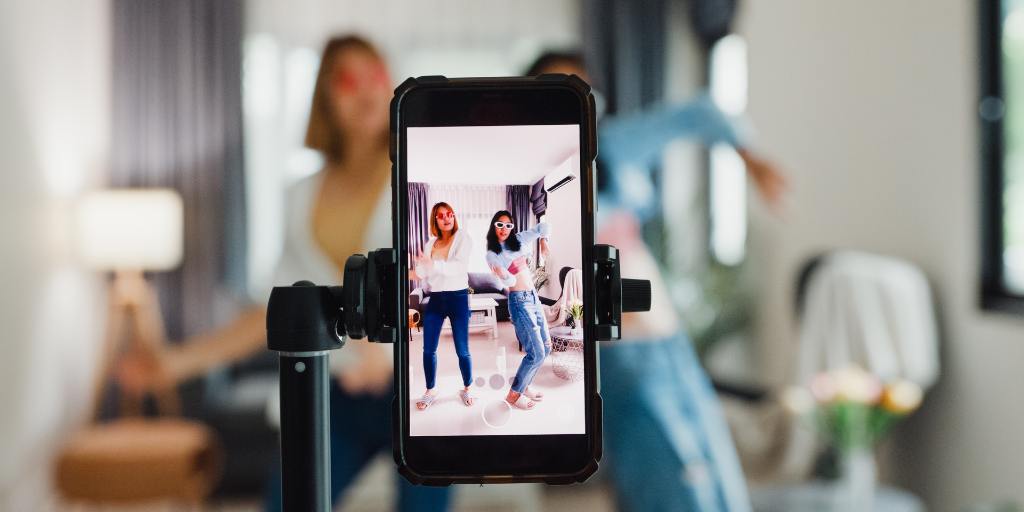
From dance challenges to funny videos, TikTok has taken the world by storm. But is TikTok safe for kids? We’ll get into that issue and help you discover ways to keep your child safe on the app.
TikTok is a social networking app where users can create, share, and discover videos and photos. Videos can be as short as 3 seconds and as long as 60 minutes.
Users can browse content made by others, and the app uses an algorithm to serve up personalized content on its For You Page. Hashtags are used to group videos that correspond with things like memes, current events, or challenges.
As of 2024, TikTok remains one of the top apps for teens ages 13–17. About 67% of teens say they use TikTok, and 16% of teens say they use it almost constantly, according to Pew Research Center.
As fun as it can be, TikTok does have serious downsides. Here are the primary risks kids face when using TikTok:
The safety of TikTok comes down to how your child uses it. For example, posting dance challenges on a private account to share with their friends is much safer than having a public account. You can further minimize the risks by monitoring their app use, taking advantage of safety features, and helping teach them how to use the app responsibly.
Here are some tips for how to help your child use TikTok safely:
Although TikTok poses inherent risks for younger users, it’s possible for kids to use the app safely if the proper precautions are put into place.

You knew this day would come. Your teen wants to start dating. Which brings up two very important questions: 1. What age is appropriate to date? and 2. What is teen dating like these days? Smartphones, the internet, and social media have dramatically changed the way teens date. Read on to learn what parents need to know.
Experts agree that kids should wait until they’re at least 16 to start going on traditional dates — that is, going out for a meal or movies without other friends around. However, this largely depends on your teen and whether they’re emotionally mature enough to be in a relationship.
The answer also depends on how your teen defines “dating.” When a tween or teen talks about being in a relationship with someone, they might be referring to back-and-forth text conversations or maintaining their Snap Streak with their crush, rather than a conventional date or relationship.
Teens make use of devices at every stage of dating. Here’s how:
Most teens don’t look to the internet to find people to date. But once they’ve identified a love interest, they often turn to social media to find out anything and everything they can about their crush.
A common way teens express romantic interest is by “deep liking,” or going onto their crush’s social media and liking a bunch of posts all at once. This practice has become a universal sign of romantic interest in the digital age. The next step is to “slide into their DMs” to start a private conversation.
Teens often spend a lot of time getting to know each other over text and social media before becoming a couple. When they’re ready to take that step, it’s typically marked by announcing on social media that they’re dating by stating their relationship status in their bio or replacing their profile picture with a couple selfie.
Once in a relationship, teens rely heavily on devices for keeping things going. This could take the form of texting, DMing, or sending Snaps.
When it comes to the end of a teenage romance, devices often play a role as well. Getting LOR (left on read), jealousy over how much their partner engages with another person online, or not hearing from their significant other — even though their posts make it clear they’re online — are all situations that could cause strife in a relationship.
However, despite their reliance on all things digital for dating, teens still mostly frown upon breaking up over text or social media.
The shift toward digital spaces in teen relationships has positive implications. It allows teens to spend more time vetting a potential partner and getting to know them before jumping into a relationship. It can also be more comfortable for socially awkward teens to initiate things online rather than in-person.
But there are also downsides to this dynamic. Here are some things parents need to be on the lookout for:
Sexting — sending or receiving sexually explicit videos, images, or text messages — is increasingly common among teens, but it can have serious implications.
Young love can be all-consuming. Many teens want to spend as much time as possible interacting with their significant other. This can lead to things like dramatically increased screen time or losing sleep from staying up late texting.
While most teens prefer to date people they know in real life, a small percentage do turn to dating apps. Some apps, like Yubo, are specifically geared toward underage daters, while others, like Skout, are meant for adults, but don’t have any age verification process. We don’t recommend teen dating apps because they come with a whole host of risks, ranging from grooming to scams.
In addition to talking to your teen about classic topics such as safe sex, birth control, and consent, broaden the conversation to include specific risks and tips for dating safely and smartly in the digital era. Here are some talking points:
Make sure they understand that sexting is risky and can have social, emotional, and even legal consequences. Even when sent over Snap, where it will theoretically disappear, the receiver can easily take a screenshot and send it out to anyone.
Reiterate your family rules around screen time and app use. Remind them that even if they want to send lovey-dovey Snaps for eight hours straight, they really do need to do their homework and sleep.
Explain to your child how easily things can be misconstrued over text or on social media. The absence of tone, facial expressions, and body language can obscure meaning, leading to conflict. Help them build skills for clear communication, stating their needs, and working through issues outside of texts and apps.
Devices, the internet, and social media have changed the way teens date. Parents should help their child understand the risks of dating in the digital era and keep the lines of communication open so that they’re able to support them if they run into an issue.
Talking to your teen should always be the first line of defense. But if you’re worried and want to keep an extra eye as they start to date, BrightCanary can help. The app’s advanced technology monitors what your child’s sends on social media, messaging apps, and other popular apps, and updates you in real-time when it detects any red flags. Start your free trial today.